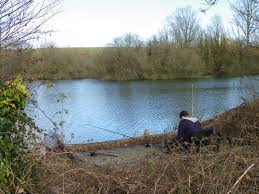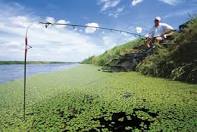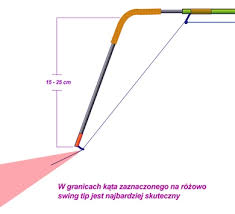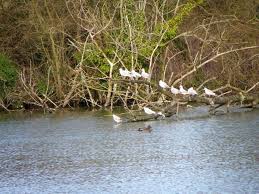

I used to
enjoy fishing at night on Steeple Langford. There was only two methods that I
tended to use in those days. The first was using a light legered arlesey bomb,
which was a pear shape with a swivel attached permanently to the top of
it. The bomb was allowed to travel up
and down the first 3 feet of line with no stop shot. This allowed the bait to be picked up by the
fish without them feeling any resistance. We used either swingtips or the new
spring tips in those days. 

Both type of tips fitted into the end of your rod.
The swing
tip would hang down while the spring tip would be held at right angles along
the bank. Bites would be shown by either the swing tip straightening out or
falling back, while the spring tip was on the end of a flexible spring and
showed bites in the same way but a bit more sensitive than the swing tip.

Before these state of the art pieces of kit we used to just use bits of silver
paper hanging over the line between the reel and the first rod ring. Another
method was to place a penny on top of the reel with a loop of reel line being
trapped by the coin. If you had a run, the coil of line would disturb the penny
and it would drop down onto a biscuit tin lid provided for the purpose. It was
good to hear the sound as you might doze off a bit if the action was slow.
My favourite
swim was on the big lake on the far bank, looking towards the road which ran
alongside the length of the lake. There was a spit running out into the lake
with about 4 swims being available for use.
If we could
get away with float fishing at night we would use floats which had a fitting in
the top to take a little neon. The neons would either be battery operated or be
a gas type which glowed when you broke them. Both types would easily last a
night without replacement. You would shine a small torch across the surface of
the lake and it would highlight the little neon on top of the float. A bite
would be signaled by the light disappearing below the surface. If it was too
windy to use this method, then we would revert to using the arlesey bomb leger
method.

I always found that the legering method was best and I have had some
tremendous bags of tench on slow sinking bread flake using a long tail between
the bomb and the hook. One big problem we had was that due to the large shoals
of tench in the comparatively shallow water, we would get loads of line bites.
I would miss up to 75% of the runs sometimes. I have had as many as 200 takes
in a night. The problem was that over a 150 were line bites. You could
literally thrash yourself to death missing runs. Still, it was all worth it in
the end. These days you would use a back lead to counteract the line bites. You
need to take account of the fact in those days anglers were paranoid about not
letting the fish feel any sort of resistance between the bait and the rod.
Nowadays we even use fixed leads and the fish hook themselves.
In those
days anglers would laugh at such behavior and would be horrified just thinking
about using such a crude method. How little did we know back then?
When it came
to fishing using the float in the daylight hours, I favored a really long
float called a wind-beater. The wind-beater was about 15 inches in length and had
a dumpy base at the bottom, with the middle section being about 12 inches long
and made of very thin plastic. The top of the float was just a sight bob about
an inch long. The thin middle section would have a zebra crossing pattern,
black and white every inch to the top. The sight bob on the top was either
orange or red in colour. The float would take about two swan shot to cock it
and hold the dumpy bottom bit under the water.

The beauty of it was that as
soon as you added a BB weight to it the long thin middle section would sink
right down to the sight bob. By careful plumbing of the depth you could set the
tackle so that the BB weight would just hold bottom without pulling the float
under. If a fish picked your bait up then a wonderful thing happened. Your
float would rise about 6 inches above the surface before gliding under the
water. The lift bites were unmissable.
Sometimes if there was a bit of
underwater drift you could add a couple of smaller shots below the BB weight to
hold bottom without the float being pulled under by the drift. The fact that
the float was heavy meant that you could fish at great distance and because the
majority of the float was under the water you could sink your line and ensure
that the float was not pulled off line by the wind and wave action. All in all,
a bit finicky to master, but when you got it right it could be winner on the
day. I remember some anglers laughing at what seemed to be a very crude set up,
but they soon came round when you started to haul fish in. To late Sonny!!
No comments:
Post a Comment